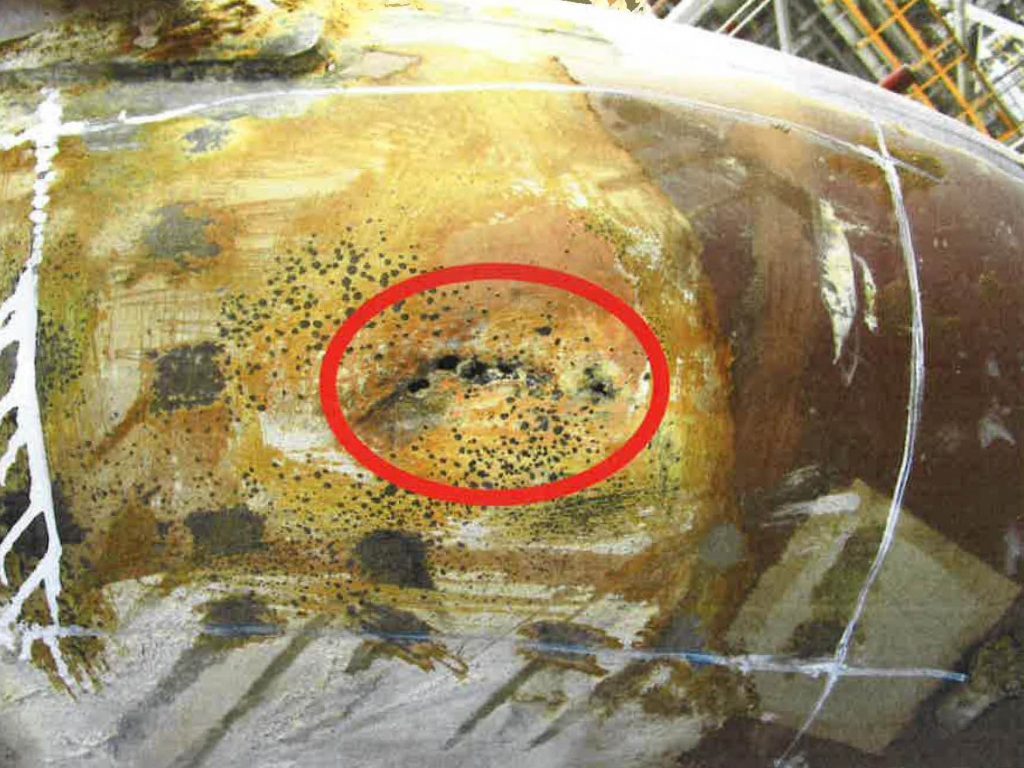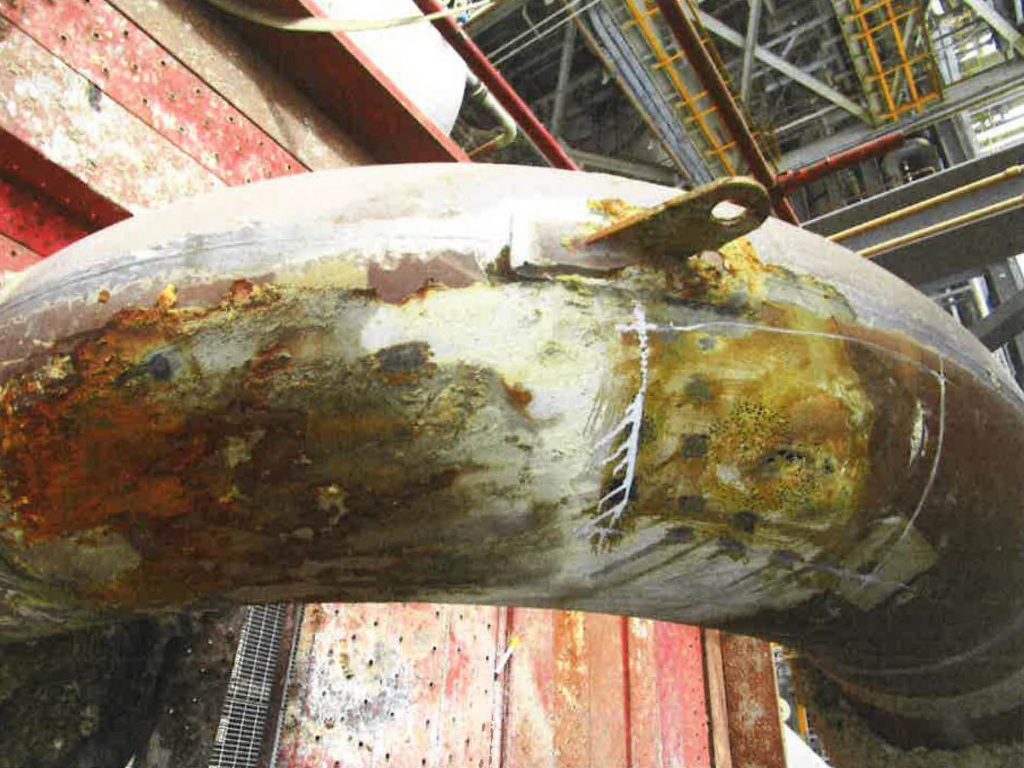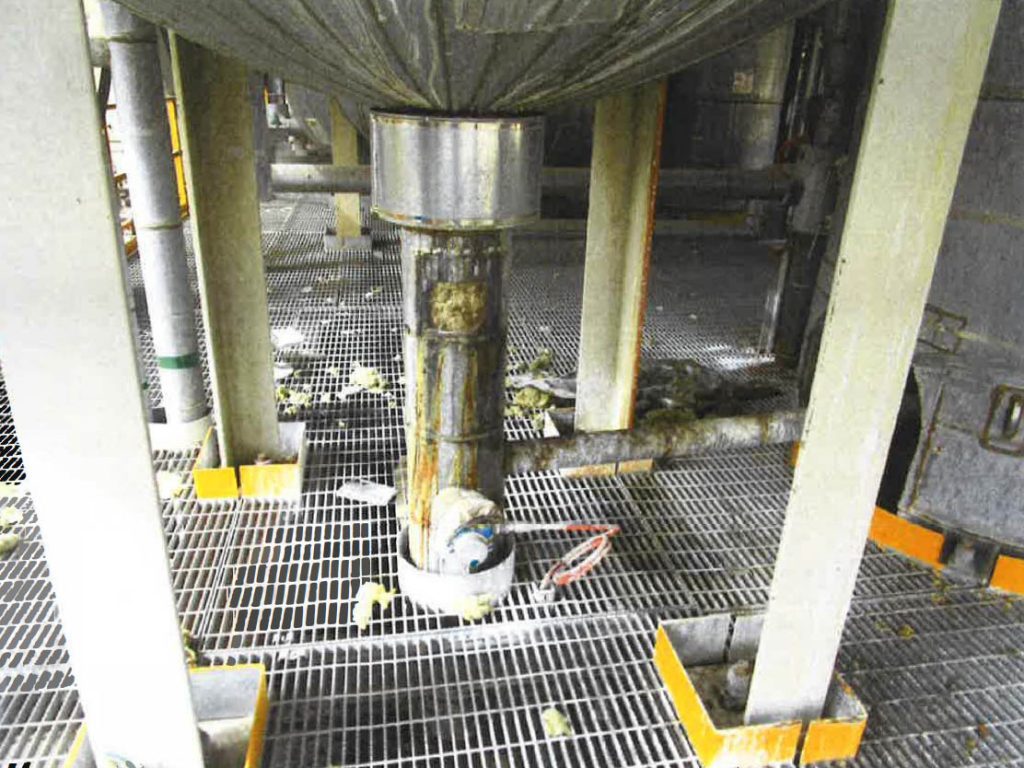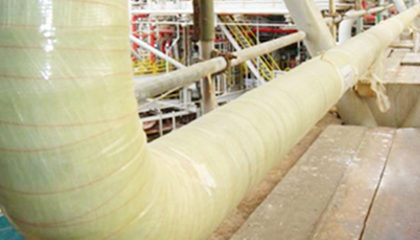Jubail, Saudi Arabia
Pipe Details
- A 24-inch caustic line had sustained internal corrosion
- Corrosion resulted in through wall damage over a 152.4-mm x 203.2-mm (6-inch x 8-inch) defect area
- 5 Bar (72.5 psi) repair design pressure
- 115°C (239°F) repair design temperature
Summary
- A 24-inch caustic line had sustained internal corrosion
- Corrosion resulted in through wall damage over a 152.4-mm x 203.2-mm (6-inch x 8-inch) defect area
- 5 local trained technicians completed the Contour installation in only 2 days
- The repair is designed for 2 years of safe service
- No hot work required
- No negative environmental consequences
Inspections at a chemical plant revealed internal corrosion damage to a caustic evaporation unit operating under 1 bar (14.5 psi) at 115° C (239° F). The 610-mm (24-inch) line had sustained corrosion at the first elbow of the duct, resulting in a 152.4-mm x 203.2-mm (6-inch x 8-inch) defect area. Wall thinning had taken place over the entire elbow, and there was insulation damage on the equipment and piping under the leaking area.
Wanting to address the problem swiftly, the owner planned to execute a stopgap fix, welding a metal plate over the damaged area and arranging to replace the damaged section of the unit at the first opportunity. While the metal plate would address the immediate risk, a more permanent repair would be needed to restore the line to safety.
Before executing this repair, the owner consulted with CSNRI to find out if there was a better cost-competitive alternative that would restore integrity and prevent environmental pollution. CSNRI experts responded within a day with a proposal.
Working to the ISO 24817:2017 standard, which outlines requirements and recommendations for the qualification, design, installation, testing and inspection for externally applied composite repair systems to corroded or damaged pipework, pipelines, tanks and vessels used in the petroleum, petrochemical and natural gas industries, engineers developed a repair.




The solution incorporated Contour, an engineered wet-applied repair system that uses quad-axial stitched fiberglass cloth applied with two-part epoxy and a filler material. Contour is ideal for repairs like this one because it is designed for a range of defects, including leaks, and can be applied easily to bends and complex geometry. It is regularly used in plants, refineries, tank farms, terminals, and offshore locations to repair a variety of pipe defects.
The Contour repair was designed for a 2-year lifetime based on a design temperature of 115° C (239° F), and a design pressure of 5 bar (72.5 psi). Since the caustic vapor line typically operates at vacuum pressure, the repair took into account vacuum loading of up to 1 bar (14.5 psi). The repair size would allow the area with the leaks to be restored to safety and extended an additional 19 inches (480 mm) beyond the damaged area. A taper of 105 mm (4 inches) was applied at the edge of the repair to limit movement of the substrate and help with load transfer. The proposed finished repair was 21 mm (0.83 inch) thick and consisted of 10 layers of Contour quad-axial fiberglass impregnated with high-temperature epoxy resin.
A team of 5 trained and certified technicians prepared the pipe surface and reinforced the damaged area with Contour, completing the entire repair in 2 days to deliver a safe and reliable solution that eliminated the threat to the environment and restored line integrity, allowing safe operations.

